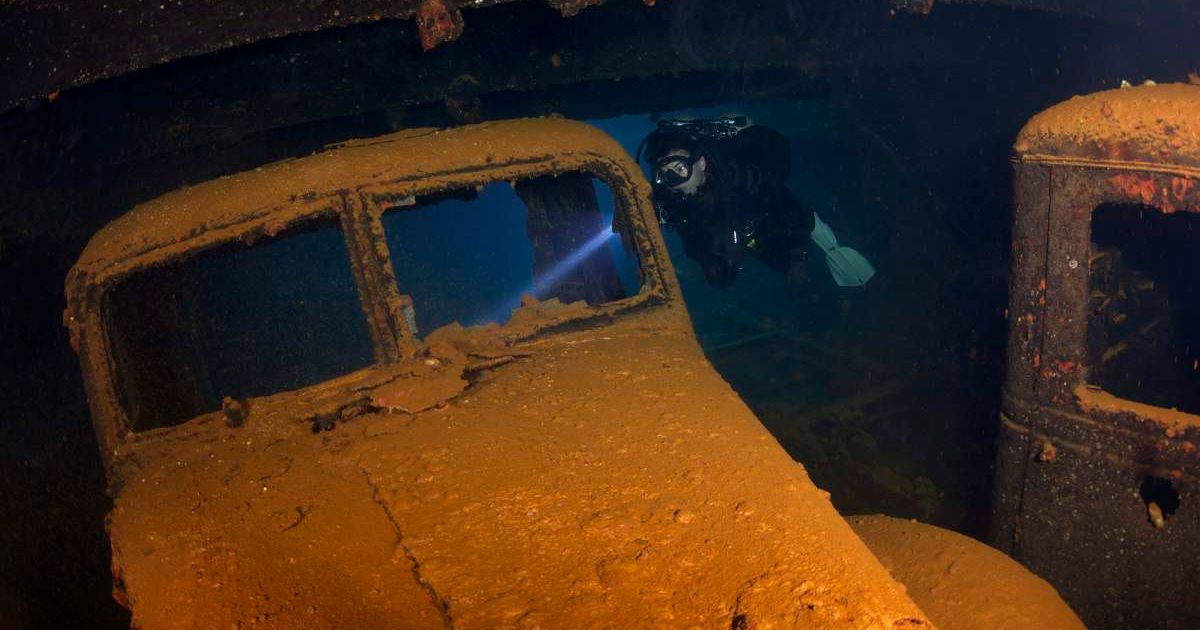Experts Submerge Life-Sized Concrete Cars off Florida’s Coast to Restore Marine Ecosystem. Will It Work?

Off the coast of South Beach, a massive fleet of cars is being submerged underwater, but it will strangely benefit the marine ecology. A unique chapter in the book of marine conservation has been added, and it's called “Concrete Coral.” Scientists have come up with this design to enhance the underwater ecosystem through coral planting. The mass coral planting is being conducted using life-sized cars, the environment's long-known rival.

The project led by the nonprofit ReefLine placed 22 sculpted concrete cars to create an underwater "traffic jam." The hybrid reef is being installed between 4th and 5th Street, about 800 feet from the shore and 20 feet below the water surface. The simulated reef will be placed in the same location where an organic reef once resided. “The difference with this environmental art and any other art is that it's also a hybrid reef, which means that it's enhancing marine habitats,” said Ximena Caminos, Founder and Artistic Director of ReefLine, per NBC 6 South Florida.

The trick here is the cars' composition. These are not regular cars built with plastic, glass, rubber, etc., but special cars curated scientifically to be the most environmentally friendly. Made with marine-grade concrete, these cars weigh 13 tons each and serve as the base for building "concrete corals." The research team plans to breed 2,200 native Miami corals. This particular type of coral was chosen because of its resilience against the 2023 mass bleaching event. “We know they're resilient. We are planting them at the site," Caminos added.
What's the purpose of outplanting corals underwater? These reef systems will act as a barrier and protect the marine ecosystems from potential storm surge and coastal erosion. Besides building a natural defense system, this project aims to restore part of the world's third-largest barrier reef system, the Florida Reef Tract. According to a press release, Miami Beach is aiming to raise $40 million to implement the 11-phase project. “The ReefLine installation is more than a stunning fusion of art and science; it's a critical long-term economic safeguard for Miami Beach,” said Miami Beach Mayor Steven Meiner.

On the other hand, Caminos emphasized how creativity can have a real impact on the environment. "This is the power of collaboration: when artists, scientists, and communities work together, regeneration becomes possible," she added. Once the installation is complete, the beach will be open for visitors to swim, snorkel, paddleboard, or dive and visit the underwater simulated coral reef that wouldn't appear anything less than an artwork. Once the project is developed, ReefLine's next aim will be to secure and protect it from future harm.
They are currently working with Miami Beach to designate the area as a Marine Protected Area (MPA) and a no-vessel zone. Until the coral reef comes under official protection, Caminos and the research team will be stringent with visitors to ensure the coral reef's safety. "We are encouraging people to be careful,” she added. Cars have always been an enemy to nature, be it the emissions or pollution. Therefore, the usage of cars in a sustainable project might sound strange, but it's quite poetic. “It’s an example of how we can come together and work creatively to tackle some of the world's biggest problems, like climate change,” Caminos said.
More on Green Matters
What Will Happen to Marine Life if All the Coral Reefs on Earth Are Lost?
This Luxury Resort in Bali Has One Request for Its Guests — Adopt a Coral to Save the Reefs
Earth’s Oceans Are Turning Greener Due to Climate Change - Scientists Say It’s Not a Good Sign